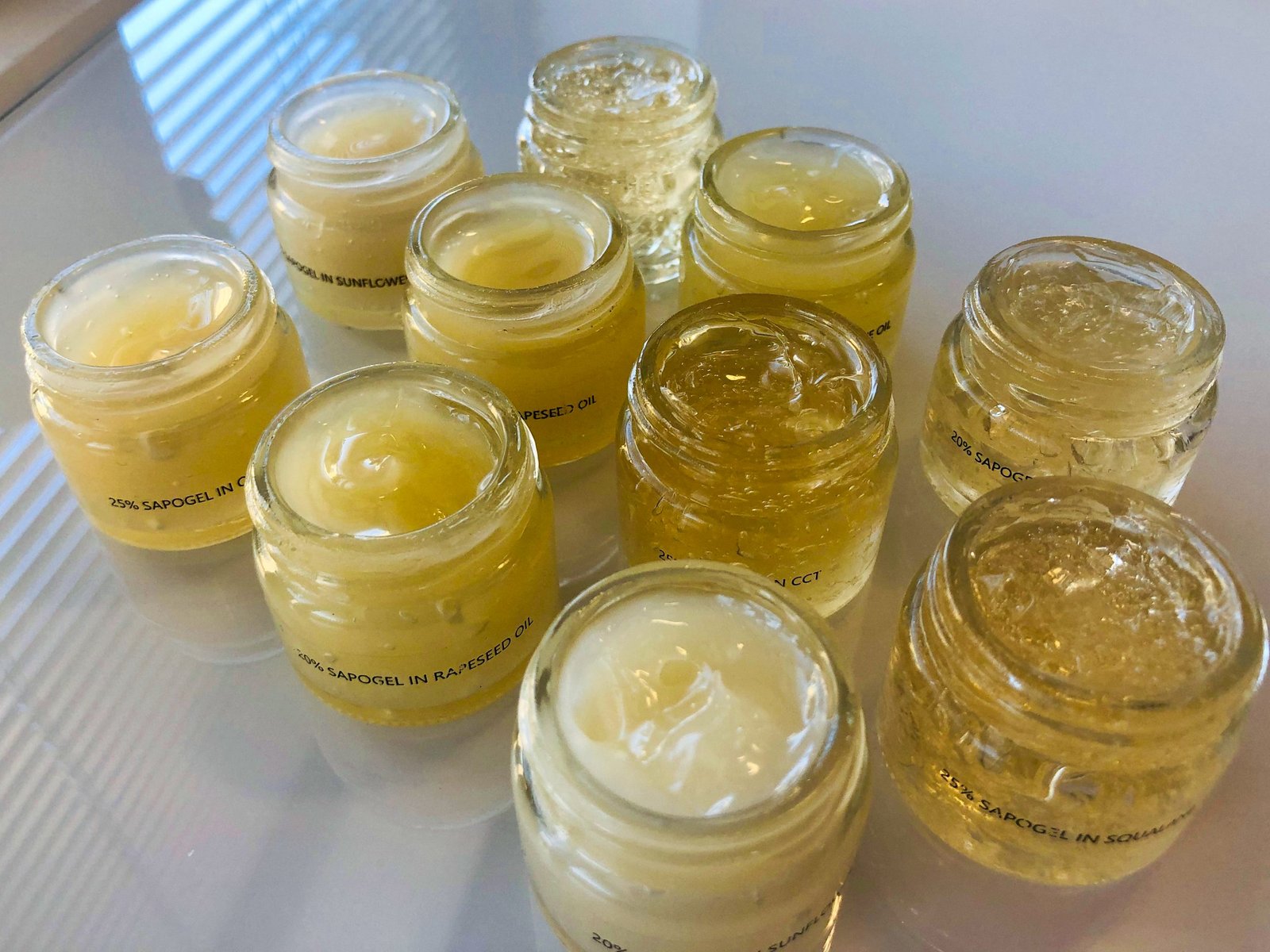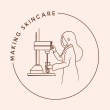Sapogel Q

I was first introduced to this new ingredient in March 2019 by its manufacturer, Alchemy Ingredients. Caroline from Alchemy hosted a special workshop for a small group of formulators which included myself, Jane Barber, Susan Barclay-Nichols (www.swiftcraftymonkey.blog), and Alchemy’s Australian distributors, Carst. The workshop proved a lovely treat for Susan and I before we travelled to Paris together for In-Cosmetics Global. You can read Susan’s blog posts about the workshop below:
https://www.swiftcraftymonkey.blog/alltheingredients-are-coming-home-with-me/
https://www.swiftcraftymonkey.blog/what-a-wonderful-day-for-formulating/
[UPDATE: November 2021 – Susan has just released a comprehensive e-zine on Sapogel: https://www.swiftcraftymonkey.blog/product/creating-oily-gels-scrubs-balms-with-with-sapogel-q/]
What is Sapogel and how does it compare to Sucragel?
Alternatives to Sapogel
To thicken an anhydrous, liquid oil product, some formulators prefer to use other oil gellants which are easier to process and less costly, such as cera bellina, sunflower wax. There are also the following:-
SOFTISAN® 100 by IOI Oleo
Vegerite SP-3000 by Strahl & Pitsch
THIXCIN® R by Elementis
Transgel 110 by Aiglon
ETHOCEL™ by Dow
For both transparency and thickening some formulators choose HIPEgel® Oleo (https://www.instagram.com/p/Bi1b26TBFlA/) which gives larger oil droplets and greater size distribution than Sapogel. More alternative oil thickeners which give transparency are listed below:
EMC30 by DKSH
Covasilic® 15 by Sensient Cosmetic Technologies
OleoCraft™ by Croda
Oilkemia™ 5S Polymer by Lubrizol
ETHOCEL™ Std 100 Premium by Dow
MAKIGEL™ OL by Daito Kasei Kogyo
Where to buy Sapogel
DIY Reseller (small amounts):
- UK/Europe: https://www.bayhousearomatics.com/sapogel-q-palm-free-thickener.html and Skin Chakra
- USA: https://lotioncrafter.com/products/sapogel-q
Bulk (large scale) suppliers:-
- USA: https://www.kinetiktech.com/our-products/thickeners/sapogel-q/
- UK: https://alchemy-ingredients.com/
- Canada: www.zymachem.com
How to formulate with Sapogel
Alchemy, the manufacturers of Sapogel, at our workshop in April 2019, provided this very simple starting formula:
Phase A: 20% sapogel
Phase B: 80% oil or ester
Adjusting viscosity
Viscosity can be adjusted by choosing an appropriate oil. Squalane, fractionated coconut and sunflower oil give the most viscosity, and olive oil the lowest. You can also adjust viscosity by playing with the percentage of Sapogel. 15% is the lowest amount of Sapogel you should use and at that concentration the product will be very solid and firm. If the maximum 25% of Sapogel is used, the product will be thinner.
Viscosity readings by a viscometer, with squalane as the sole oil and 20% Sapogel Q, (spindle 94, speed 10), show 185200. If an extra 5% Sapogel (25% total), is used instead, the viscosity decreases to 127400.
To reduce viscosity, add a small percentage of glycerin. Water at up to 4% can also be added to thin the product, but the appearance will be more opaque.
For a very transparent product, squalane and fractionated coconut oil are the two best oils to use. If a non-polar oil or anything oil soluble which needs melting, such as a wax or cocoa butter, is added, expect the product to be opaque.
To avoid poor pick up and instability, it is best to stick with polar oils, such as vegetable oils.

The photo above shows the variety of different textures, viscosities and clarity which can be achieved by differing the type of oil and also the concentration of Sapogel.
Making a cleanser
Unfortunately Sapogel is not compatible with most surfactants especially those which contain water and are mainly lipophobic, but if you choose the right ingredients you can make the product easier to rinse off by using small amounts of, for example, Cromollient SCE or Shea Butter Ethyl Esters.
Formula
Below is a scrub formula made back in late Spring last year shortly after the workshop, which, nearly a year on, is still stable. It contains 22% Sapogel Q together with two oils, fractionated coconut oil and sunflower oil, and for a nice colour and gentle exfoliation, 2% of Vantage’s jojoba scrubeads, in their “green jelly bean” colour, particle size 40/60.
Process:
- Weigh the Sapogel into one beaker and the oils into a separate beaker. If solids are used such as waxes or butters melt them first.
- Using an overhead stirrer, stir the beaker containing Sapogel with a propellor blade set to 1,000 rpm. Ensure the blade is covered by the Sapogel. (Homecrafters can use a stick blender or kitchen aid with paddle attachment but must follow these instructions very carefully).
- Add the oil(s) to the Sapogel beaker, very slowly. Start drop by drop for the first 10% of the oil.
- Continue adding the oil in portions, allowing the gel to reform before you add more oil. This is very important. You may increase the speed of mixing as needed.
- The product will thicken as more oil is added.
- Once all oil is added, you can add the exfoliant, if any.
2 thoughts on “Sapogel Q”
Leave a Reply Cancel reply
This site uses Akismet to reduce spam. Learn how your comment data is processed.

My findings with Sapogel Q was that I loved it when manufacturing very small quantities. It worked EXACTLY as I hoped it would and I really do like the resulting gel.
However I ran into a lot of problems when upscaling. We don’t have a lot of equipment and pretty much everything I tried resulted in a gel which seemed to separate overnight.
The most I’m comfortably working with is still quite small (4K batch in total). I’ve found the best way to mix it and get stable results is in an electric mixer with a paddle. It works well and consistently if care is taken to add the oils nice and slowly (turkey baster is very good for this).
Would love to make bigger quantities but not quite sure how to upscale further
Hi Denice, yes this is the downside of Sapogel – with bigger batch sizes it can get quite challenging to make. I listed some alternatives in case you would like to give them a shot.